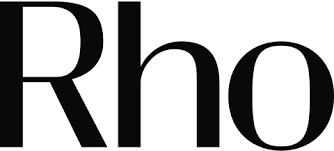Insured Cash Sweep Accounts: Pros, Cons and Top Options
Access nine figures in FDIC coverage using an ICS account, which distributes your funds across many different banks.

Many, or all, of the products featured on this page are from our advertising partners who compensate us when you take certain actions on our website or click to take an action on their website. However, this does not influence our evaluations. Our opinions are our own. Here is a list of our partners and here's how we make money.
Table of Contents
What is Insured Cash Sweep?
Insured Cash Sweep is a service offered by banks to safeguard deposits when your balance exceeds the Federal Deposit Insurance Corp. coverage limit of $250,000 per depositor, per institution.
With an ICS account, you deposit, manage and withdraw funds from one primary checking, savings or cash management account. But behind the scenes, sweep accounts spread funds across a network of FDIC-insured banks, placing up to $250,000 at each.
You can open an ICS account with any business bank that participates in the IntraFi Network or similar organization. Some neobanks also offer ICS accounts via their partner banks.
However, FDIC insurance applies only if that partner bank fails. If the fintech company goes under, your money should be safe at their partner banks — but recovering it could require time and frustration.
For that reason, if you’re seeking an ICS account primarily for peace of mind, it may be best to choose a chartered bank like Axos Bank or Live Oak Bank rather than a fintech like Rho or Brex.
Best Insured Cash Sweep accounts
Among our picks for best business bank accounts, the following options are ICS accounts. You can explore other banks that are part of the IntraFi network on its website.
Axos Business Premium Savings Account
Axos Business Premium Savings Account is one of our top business savings accounts, offering 3.8% APY on balances up to $5 million. APYs on balances beyond that can vary. There’s no monthly maintenance fee, and new customers are eligible for a $375 sign-up bonus. Terms apply. Axos is an FDIC-insured bank.
Rho
Rho is a bank for startups. Rho accountholders can open a checking, savings and Treasury account. The business savings account provides up to $75 million in ICS coverage but doesn’t pay interest. For that, you’ll need to deposit at least $500,000 in a Treasury account. These are securities-based portfolios and therefore are insured by the Securities Investor Protection Corporation (SIPC) instead of the FDIC (for up to $500,000).
Rho is a neobank; banking services are provided by Webster Bank, N.A., member FDIC, as well as American Deposit Management Co. and its partner banks.
Live Oak Bank Business Savings
Live Oak Bank Business Savings is NerdWallet's pick for best business savings account, thanks to its high 3.50% APY on all balances and lack of a monthly maintenance fee. You can opt for Live Oak's Insured Cash Sweep account if you have a balance of at least $350,000. Note: The bank's ICS account earns a slightly lower yield (3.45% APY as of this writing).
Brex
The Brex Business Account is a great option for venture-backed startups. The business cash management account has no monthly fees and offers free domestic and international wire transfers. Account holders get a business checking account for operating expenses, a Treasury account that invests funds in a money market fund (4.90% APY as of this writing) and an ICS account, or "Vault" account, that offers up to $6 million in FDIC insurance coverage.
Brex is a neobank; banking services are provided by Column, N.A., member FDIC.
Mercury
Mercury, like Rho and Brex, is a startup-focused banking platform that offers checking, savings and cash management accounts. Mercury’s checking and savings accounts provide up to $5 million in FDIC insurance coverage via ICS. To earn a yield on your funds, however, you’ll have to deposit them in a Treasury account that invests in an SIPC-insured money market fund.
Mercury is a neobank; banking services are provided by Choice Financial Group, Column N.A., and Evolve Bank & Trust; Members FDIC.
Holdings High-Yield Cash Account
The Holdings High-Yield Cash Account pays an APY of 1.5% on all balances but lacks debit card or check access. Holdings accounts offer Insured Cash Sweep, covering up to $5 million.
Holdings is a neobank; banking services are provided by Evolve Bank & Trust, Member FDIC.

Holdings High-Yield Cash Account
1.50%
at Holdings, Deposits are FDIC Insured
Bluevine Business Checking
Bluevine Business Checking is a free business checking account that offers a high yield: Earn 1.50% interest on account balances up to and including $250,000. Terms apply. Account holders automatically are enrolled in an ICS account that offers up to $3 million in FDIC insurance coverage.
Relay Business Savings
Relay Business Savingsis only available to customers who also have Relay checking accounts. Both are great options, though, and the savings account currently pays APYs of between pays an APY of between 1.03% and 3.76%, depending on your balance. ICS provides up to $3 million in FDIC insurance coverage.
Relay is a neobank; banking services are provided by Thread Bank, Member FIDC.
How to open an ICS account
1. Find a participating institution. Sweep accounts are typically only available at banks that are part of the IntraFi network, which includes thousands of local, regional and national FDIC-insured banks. Several online banks, including Axos, Grasshopper and Live Oak, are themselves members of the IntraFi network.
You can also get an ICS account through neobanks like Bluevine, Relay and Mercury. These financial technology companies partner with FDIC-insured banks in the IntraFi network. Just be aware: FDIC coverage only kicks in when an insured bank fails. It does not apply if a neobank or its intermediary shuts down — even if they partner with an FDIC-insured institution.
» MORE: What happens if a neobank fails?
2. Opt in to sweep services. You usually have to opt in to a sweep account, though Bluevine Business Checking and some others offer ICS accounts as the default option. Either way, you’ll sign an agreement when you open your ICS account that allows the bank to move your money to other partner banks. Keep in mind that sweep accounts may have additional fees.
3. Choose your sweep preferences. You can typically select between two sweep options: demand or savings. Demand accounts allow for unlimited withdrawals, whereas savings sweep accounts place funds in money market accounts that cap withdrawals (often at six per month) but often offer a better interest rate. Demand accounts are best for operational funds that you need to draw on regularly, while savings sweep accounts are better suited for emergency savings and cash reserves.
Some banks also offer a third sweep option — Certificate of Deposit Account Registry Service or CDARS — which places funds into business certificates of deposit. These accounts typically have a higher, fixed interest rate, but you’ll pay a penalty if you withdraw funds before the CD term matures. Your sweep account options may vary from one financial institution to the next.
💰 NerdWallet's best: Business savings accounts | Business money market accounts | Business cash management accounts
4. Let the account do its work. Your Insured Cash Sweep account will distribute your funds across a network of partner banks behind the scenes per your preferences. No bank account will have more than $250,000 within it — the maximum covered by FDIC insurance at one financial institution.
5. Access funds as usual. Despite having funds spread across potentially dozens of banks, you’ll still only deal with one financial provider and be able to see and access all of your funds through that primary bank. Large withdrawals could be delayed a day or two depending on the amount needed, with CDARS funds likely locked up even longer in line with the CD’s term.
Benefits of an Insured Cash Sweep account
Unlock millions in FDIC insurance. The FDIC insures up to $250,000 per depositor, per institution and per ownership category, which is likely sufficient for many small businesses. But companies with larger operating budgets may be exposed if their bank fails. Insured Cash Sweep accounts offer a solution by placing your deposits, in $250,000 increments, across a network of FDIC-insured banks. Combined, those partner banks can provide several million dollars in FDIC coverage.
Manage funds through one account. Business owners may want multiple business bank accounts to protect themselves from unexpected interruptions like an account freeze. But if you’re manually spreading opening and managing accounts across dozens of financial institutions just to ensure FDIC coverage, Insured Cash Sweep accounts simplify the process. Account holders open an account through one primary bank that acts as a custodian and automatically moves money to partner banks so that you don’t exceed $250,000 (principal and interest) at any one bank.
Even if you use a sweep account, NerdWallet still recommends using separate banks for your main operating account, payroll account and emergency fund. This minimizes potential disruption to your business if your account is frozen or closed, or if one of your primary banks fails.
Drawbacks of an Insured Cash Sweep account
Additional fees apply to some sweep accounts. Sweep accounts require some additional overhead for financial institutions, and that cost may be passed down to account holders. Some ICS accounts charge a monthly fee, while others simply take a portion of the interest earned on your sweep account.
ICS protection works differently with neobank accounts. If you opt for an ICS account via a neobank, your funds are covered if their underlying partner bank — or any other institution holding your deposits in the IntraFI network — fails. But those protections don’t apply if the fintech or any intermediary it works with files for bankruptcy or otherwise ceases operations.
While it’s unlikely you’ll lose your funds entirely if that happens, getting your money back will be more complicated — and could take far longer — than typical with FDIC insurance coverage, which usually restores access to funds within a few days.
For example, the recent headaches with Synapse Financial Technologies, an intermediary that partnered with Evolve Bank & Trust and several neobanks (including Mercury). When Synapse filed for bankruptcy in April 2024, thousands of customers lost access to their deposits. This issue took months to be resolved.
You may not earn interest on your full deposit (or at all). If your business has millions of dollars in deposits, ideally you’re putting it to work in a high-yield account. While most ICS accounts earn interest, some pay lower rates or cap what you can earn.
Bluevine Business Checking, for example, offers up to $3 million in FDIC insurance coverage through its sweep account. But you only earn interest (1.50% APY) on balances up to and including $250,000. And Mercury’s Business Bank Account, which is eligible for up to $5 million in FDIC insurance coverage, does not earn any interest.
NerdWallet evaluates more than 30 business bank accounts from national, regional and online banks. Collectively, these accounts represent the largest banks by assets, internet search traffic and other factors, along with notable or emerging players in the industry.
We consider more than 20 data points for each account, including services, fees, features and rewards. We gather this information from rates and fees documents, deposit account agreements, financial institution websites and company representatives.
Our editorial team regularly reviews and updates our data to ensure consistency and accuracy. We also update our scoring on an ongoing basis to reflect changing industry norms and business owner needs. For instance, in 2025, we introduced bonus points for notable built-in software features, like the ability to accept tap-to-pay payments from customers using a mobile app.
Final star ratings are presented on a scale of one to five stars, where a five-star score represents the best available product for the largest number of business owners. Learn more about how we rate business checking accounts.








